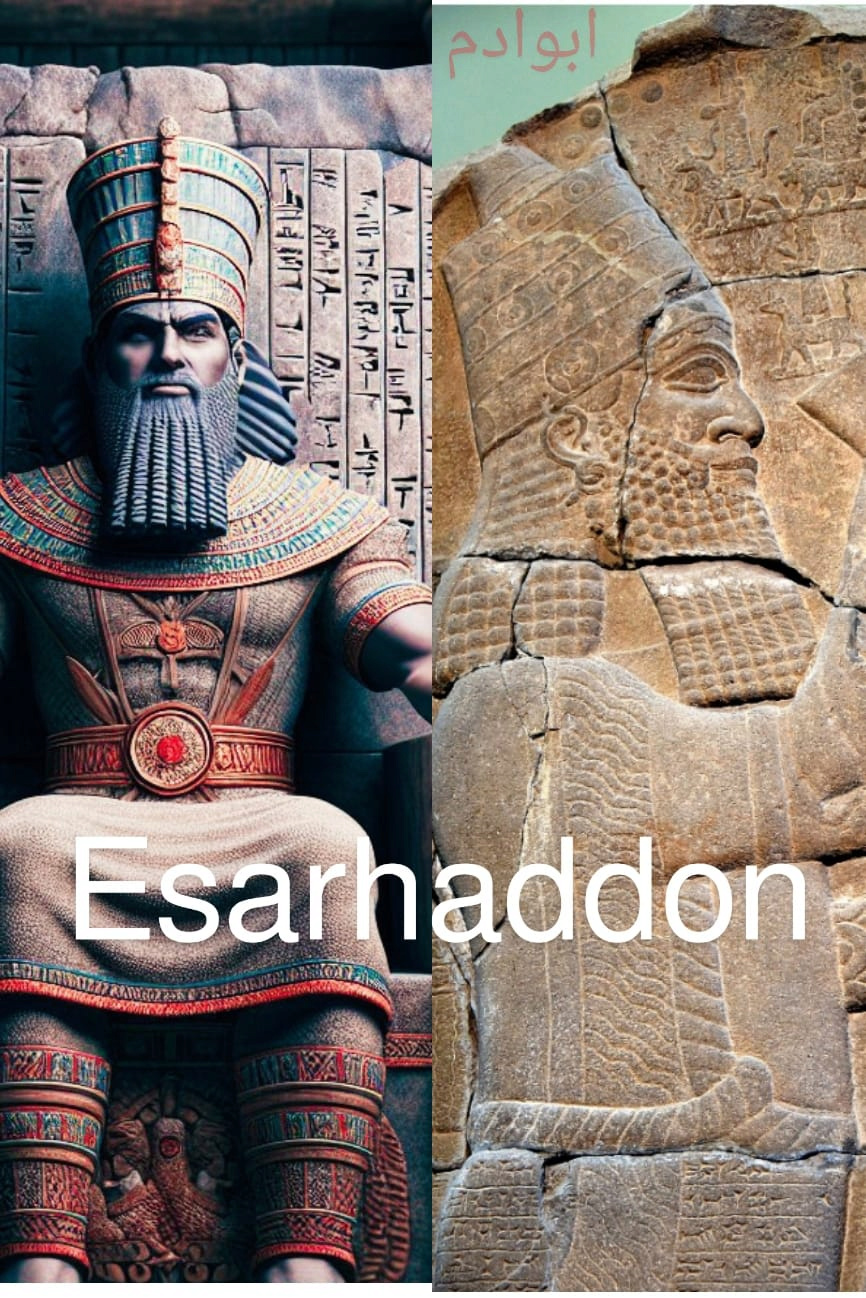10information about the Assyrian king Esarhaddon, son of King Sennacherib and father of King Ashurbanipal:-

Ashur-Akhi-Adan Awashur-Ahaha-Yadna in Akkadian, which gives the meaning of the god Assyria who gave a brother, and his name was mentioned in the Tanakh in the form of Esarhaddon. He is the son of Sennacherib and the grandson of Sargon II. He was one of the kings of Assyria (680 - 669 BC) in the New Assyrian state. He ascended the throne as a result of an internal conspiracy in the royal court led by his brother Arda Moulisso, in which his father Sennacherib was killed, but Esarhaddon confronted the conspirators, fought them, defeated his brother, and declared himself king. He reconsidered his father's policy towards Babylon, reconstructed it, restored the statue of Marduk, appeased its priests, and built many temples there. Due to his friendly relations with Babylon when he was crown prince, he was able to reconcile the two capitals, Babylon and Assyria.
1-The Assyrian king Esarhaddon had a twin sister named Shadito.
2-King Esarhaddon was religious.
3-King Esarhaddon loved his daughter, Syro Aitrat, more than the rest of his sons.
4-He had 18 children.
5-He loved Marduk and Babylon in an unnatural way, to the point that at a certain period he forgot to care about Assyria and continued to care about Babylon.
6-He is considered the first Assyrian king to occupy half of Europe and the entire Middle East.
7-Esarhaddon was the proudest king of Assyria compared to the rest of the ancient kings, and he wished to be like them or better than them.
8-He is considered the king who had the most enemies, and he was subjected to many assassination attempts, but they all failed to kill him.
9-He is considered the king in Mesopotamia who suffered the most from illness and was in pain. So much because of it that he did not eat or drink much and was suffering from extreme thinness and weakness in the body.
10-He died due to illness and his body’s inability to resist the heat of the sun. He died at the age of 44 on the first of November in the year 669 BC.
Source: websites

